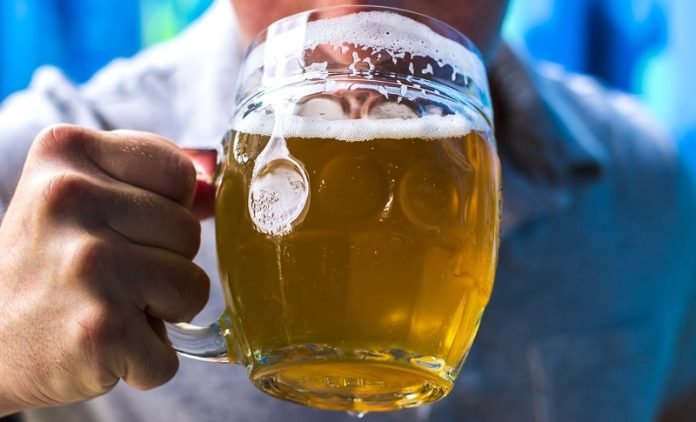
Congratulations on making it through dry January without a beer or glass of wine—or at least with fewer alcoholic beverages than you down in December.
But before you toast your achievement on Feb. 1, experts in addictive behavior ask you to lower your glass and reflect on what reducing alcohol consumption over the past month meant for your physical and mental health as well as your family life and energy levels.
“How did you sleep? Were you less anxious? Did your mood improve a bit?
Did you feel better physically, or less sluggish? Did you lose weight?” says Robert Leeman, an experimental psychologist at Northeastern University whose research focuses on addictive behavior, particularly around alcohol.
He says people should ask themselves, “Did I value these changes? Can I retain some of that?”
Reflect on changes, especially improvements
Like other experts on addiction, Leeman loves dry January not because it sticks it to the liquor industry and drives down sales but because it makes individuals conscious of how much alcohol they consume and the repercussions of that consumption.
“Dry January allows people to reevaluate their relationship with alcohol,” says George F. Koob, director of the National Institute on Alcohol Abuse and Alcoholism.
“If you are feeling better, working better and sleeping better when you cut back, I think you need to listen to that,” says Koob, who wrote a column of advice for dry January and beyond.
Dry January launched in the United Kingdom in 2013 and attracted tens of thousands of participants the first month of 2023, its 10th anniversary, according to the founding organization, Alcohol Change.
Karen Kantor, a social worker in the addiction outpatient unit at McLean Hospital in Belmont, Massachusetts, says she loves how the movement has changed the conversation from who is and who is not an alcoholic to making awareness of alcohol consumption an important part of one’s individual health plan.
“That’s new,” she says.
As people enter the last stretch of dry January, Kantor advises them not to waste the insights they have gained.
Journaling—even a line or two—can help people remember they actually did have a good time at a concert or sporting event without alcohol, she says.
“Be open-minded about this reflection and review,” Kantor says, adding that people may discover some friendships or relationships existed solely due to drinking together. “The only thing you had in common was alcohol.”
No such thing as a healthy drink?
Over the years there have been loads of contradictory studies on whether moderate alcohol consumption is good or bad for one’s health.
“We’ve converged on a conclusion there’s no safe alcohol per se,” Leeman says.
In fact, the World Health Organization published a statement in the Lancet Public Health journal that “when it comes to alcohol consumption, there is no safe amount that does not affect health.”
Leeman says he’s aware of previous studies touting the benefits of antioxidants in wine and of the better health outcomes of moderate drinkers compared to abstainers and heavy drinkers.
“I never found those data to be particularly compelling,” he says.
“No one ever advocates for abstainers to begin drinking wine” for the health benefits, Leeman says.
“It’s a little bit nuanced,” Koob says.
He says there is no safe level of alcohol for the general population and those who should not drink include pregnant women, people with an underlying liver disorder, those with a family history of alcohol disorder and people who want to reduce their risk of certain cancers, including breast cancer.
“It’s something each individual has to weigh for themselves,” Koob says.
Leeman agrees, adding that he plans to meet with former colleagues and friends at a brewery when he visits Florida in several weeks.
“I don’t want to be a hypocrite here,” he says.
Leeman says moderate drinking is better than heavy drinking, and light drinking in turn is better than moderate consumption of alcohol.
The Centers for Disease Control defines moderate drinking as two or fewer drinks a day for men and one or fewer drinks a day for women.
Binge drinking, according to the CDC, generally correlates to five or more drinks for men on a single occasion, often within two hours, and four or more drinks for women.
Don’t tie one on
Koob strongly advises against going on a binge to celebrate the end of dry January.
He says he knows it can be tempting for some people.
“There’s a phenomenon that’s been well documented known as the alcohol deprivation effect. ‘I’m done with January so I’m going to tie one on.’”
Koob says binge drinking can affect “just about every organ in the body” and bring on atrial fibrillation, make liver enzymes go haywire, cause blackouts, increase susceptibility to pneumonia and aggravate diabetes symptoms.
“Please don’t tie one on,” he says. “It’s not good for your body in any way, shape or form.”
On its “rethinking drinking” webpages, the NIAAA offers tools for assessing how many drinks are too much and techniques for cutting back.
The carryover from dry January is to remain conscious of drinking levels, Koob says.
“Chart how much you’re drinking,” he says. “Write it down. Listen to your body.”
Written by Cynthia McCormick Hibbert.
If you care about wellness, please read studies about the best time to take vitamins to prevent heart disease, and vitamin D supplements strongly reduce cancer death.
For more information about wellness, please see recent studies about plant nutrients that could help reduce high blood pressure, and these antioxidants could help reduce dementia risk.



